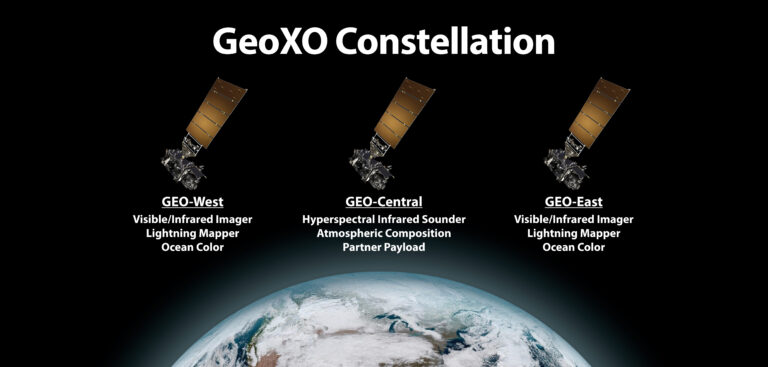US space agency NASA has selected L3Harris Technologies to develop the imager for the National Oceanic and Atmospheric Administration’s (NOAA) next-generation Geostationary Extended Observations (GeoXO) satellite program.
Valued at around US$765.5m, the contract includes the development of two flight instruments as well as options for additional units. The anticipated period of performance includes support for 10 years of on-orbit operations and five years of on-orbit storage, for a total of 15 years for each flight model. The work will be completed at L3Harris facilities; NASA’s Goddard Space Flight Center in Greenbelt, Maryland; and the agency’s Kennedy Space Center in Florida.
The GeoXO Imager (GXI) is the primary instrument for the GeoXO mission, which will eventually replace NOAA’s Geostationary Operational Environmental Satellites (GOES-R Series) program in the 2030s. GXI is a multichannel, passive imaging radiometer used to measure environmental data. The instrument will provide real-time, high-resolution visible and infrared imagery for monitoring the Western Hemisphere’s weather, ocean and environment. GXI will be used for a wide range of applications related to severe storms, hurricanes, aviation, natural hazards, the atmosphere and ocean. GXI will monitor cloud formation, atmospheric motion, convection, land surface temperature, fire, smoke, dust, volcanic ash plumes, aerosols, air quality, vegetative health and more.
The contract scope includes the tasks and deliverables necessary to design, analyze, develop, fabricate, integrate, test, verify, evaluate, support launch, supply and maintain the instrument ground support equipment, and support mission operations at the NOAA Satellite Operations Facility.
Together, NOAA and NASA will oversee the development, launch, testing and operation of all the satellites in the GeoXO program. NOAA funds and manages the program, operations and data products. On behalf of NOAA, NASA and commercial partners develop and build the instruments, spacecraft and ground system, and launch the satellites.
Click here for the latest GeoXO news.



